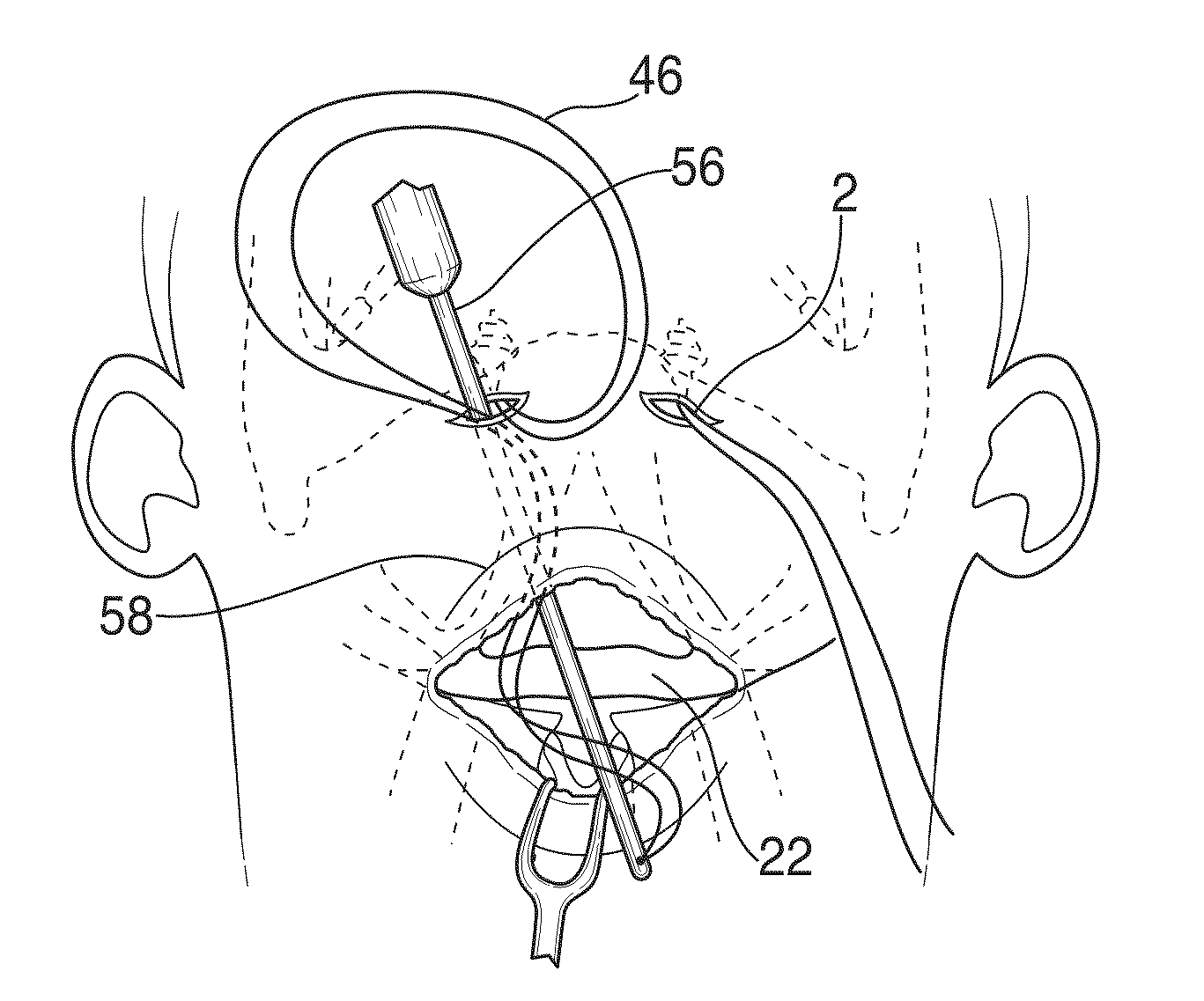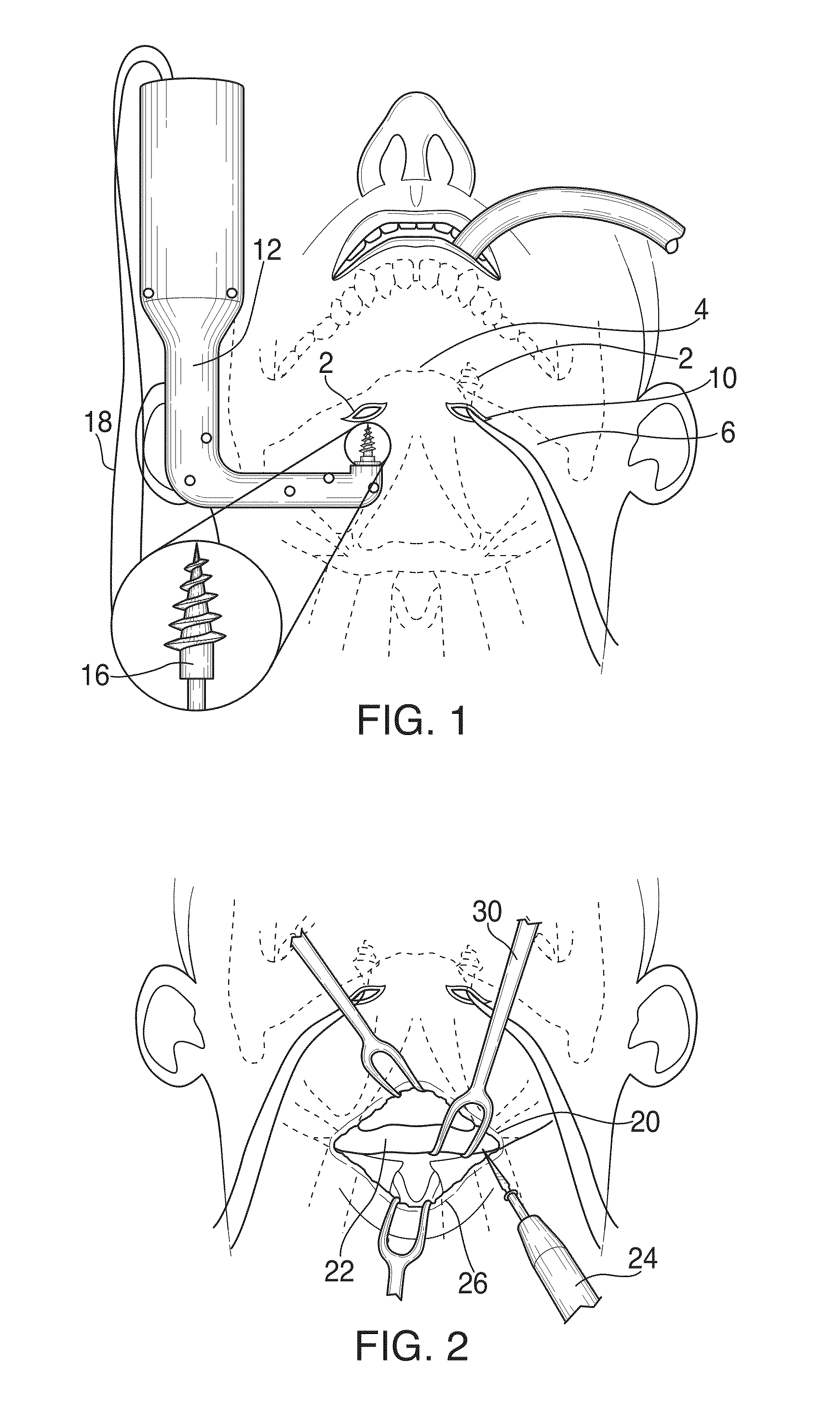Hyoid suspension for obstructive sleep apnea
a technology of obstructive sleep apnea and hyoid suspension, which is applied in the field of treating sleep disorders, can solve the problems of excess and/or collapse of soft tissue, obstruction of the upper airway,
- Summary
- Abstract
- Description
- Claims
- Application Information
AI Technical Summary
Benefits of technology
Problems solved by technology
Method used
Image
Examples
example 1
[0079]Patients were treated as described above with regard to FIGS. 1 to 6. The most common postoperative patient complaints included dysphagia, odynophagia and surgical wound pain. All patients were able to tolerate liquids and a soft diet at the time of discharge. No patients requested or required removal of the suspension sutures.
[0080]After 3 to 12 months of follow-up postoperatively, over 90% of the patients were subjectively improved by patient and / or spouse history. Symptomatic improvement included decrease in snoring, improved quality of sleep, and decreased daytime somnolence. Follow-up polysomnographic studies were performed 3 months to 1 year postoperatively in 52 patients. The patients that underwent hyo-mandibular suspension with or without hyoid expansion showed significant improvement in the mean RDI (Respiratory Disturbance Index) from 71.2 (±18.0) preoperatively to 28.4 (±16.8) postoperatively.
example 2
[0081]An incision was made in the anterior portion of the neck of a dog, and an implant comprised of reticulated elastomeric polycarbonate polyurethane-urea matrix was inserted into musculature at the base of the dog's tongue. A cavity was created, and the implant was secured with sutures in that position and left in place for three months. Fibrovascular tissue cells grew into the elastomeric matrix of the implant, as is shown in the micrograph slides shown in FIGS. 11 and 12. The implant comprises a netlike structure of unstained, short, narrow, birefringent synthetic fibers, and these foreign fibers are surrounded by individual histiocytes and (mmGCs) of foreign body type. These cells are between the device material and many small (˜0.2 mm to ˜0.4 mm) irregularly round masses of fibroblasts and collagen. Within these fibrous foci are arterioles, veins and capillaries of varied size and number. The fibrocytic reaction at the perimeter of the device extends into the interstitial tis...
PUM
 Login to View More
Login to View More Abstract
Description
Claims
Application Information
 Login to View More
Login to View More - R&D
- Intellectual Property
- Life Sciences
- Materials
- Tech Scout
- Unparalleled Data Quality
- Higher Quality Content
- 60% Fewer Hallucinations
Browse by: Latest US Patents, China's latest patents, Technical Efficacy Thesaurus, Application Domain, Technology Topic, Popular Technical Reports.
© 2025 PatSnap. All rights reserved.Legal|Privacy policy|Modern Slavery Act Transparency Statement|Sitemap|About US| Contact US: help@patsnap.com



